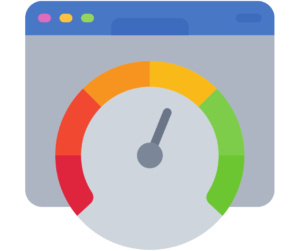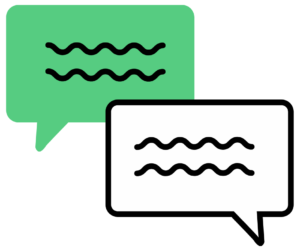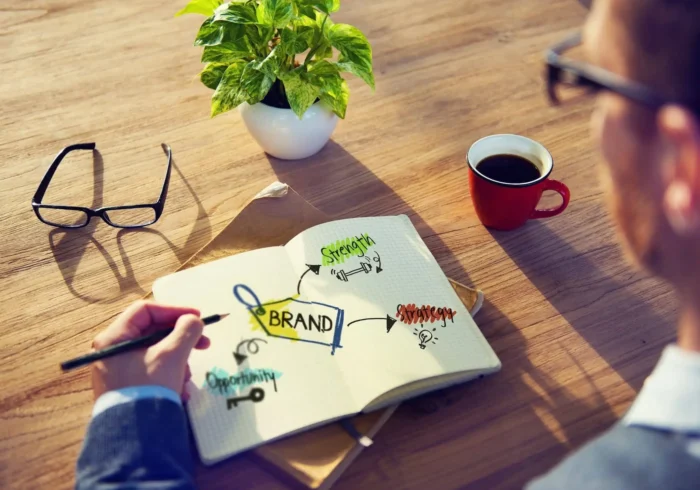Trends in Web Design for 2021
In the fast-changing landscape of website design trends, it can be hard to weed out the “trendy, but fleeting” from the “new and effective.” Some of the design elements on your company website that were once effective may have become tired and are just not converting the way they used to. The last thing you want is to turn your visitors off because your website looks outdated or ignores core web standards.
In my last post, I shared five major web design updates that you should have done in 2020. Now that we have those out of the way, I thought I’d add a little extra perspective on what trends are making the biggest waves in website design for 2021 that you should consider including in your next round of site updates.
#1 Site Performance

According to a Google Benchmark Survey, as your page load time increases, the probability of your website visitor bouncing also increases dramatically. This tenant of web design is more than just a trend. In fact, it’s so critical that we’re repeating it here after including it on the list for last year (if you missed it, check out our 2020 Web design Must-Dos). Quick load time has been an important factor in User Experience (UX) and SEO for years, and it continues to be a top priority for websites that want to rank well and get conversions.
Last year, Google announced that a site’s Core Web Vitals will be used in their search ranking results beginning in May 2021.Core Web Vitals are criteria that measure how users experience the speed, responsiveness, and visual stability of a page.
Google’s Core Web Vitals include:
- Largest Contentful Paint (LCP): This measures the time it takes for a page’s main content to load (basically enough for the visitor to be able to see it). An ideal LCP is 2.5 seconds or faster.
- First Input Delay: This measures the time it takes before a visitor to be able to interact with the page. An ideal time is less than 100 ms.
- Cumulative Layout Shift: The amount of unexpected layout shift of the page content shifting after the visitor tries to click). An ideal target for this is less than 0.1.
Google also has plans to add labels to their search results based on a website’s core vitals, and is expected to add these labels in May 2021 alongside the page experience update.
#2 User Experience (UX)
In the web design space, usability refers to how easy a website is for visitors to interact with it. User Experience (UX), on the other hand, is all about the way visitors feel about interacting with your website. If it takes too much effort to search for information or if they just don’t get a good “vibe” from your site, they are less likely to stay on your website.
As we explained in our last post, more and more people are surfing the web on their phones, so your site needs to account for the user experience of a smartphone user just as it does for a desktop user. Our website design for The National Breast Cancer Foundation was especially focused around connecting to their visitors through the total user experience.
#3 Animation/ Motion UI/ Micro-Interactions (we like to call it ‘Delight’)

A big trend we expect to continue growing is the addition of effects to websites that make it feel interactive and almost tactile to your visitors. These are things that web visitors don’t necessarily think about consciously, they just know they like them when they are on your site.
Micro-interactions are small animations that give subtle feedback to website visitors. You are likely familiar with some micro-interactions such as color or image change when you hover your mouse over a link or icon. They are a great way to draw a visitor’s attention to something and invite them to interact.
#4 Personalization & Dynamic Content
It’s no secret that consumers as a whole seek out information that is relevant to their tastes, and they want to access it in the most convenient way. Therefore, it’s not surprising to learn that providing dynamic, personalized content on a website consistently leads to higher engagement and conversion rates.
Dynamic content on a website refers to information, data, or visuals shown to a visitor based on their individual characteristics, such as their location or specific behavior and interests. For example, if someone browses a website with dynamic content while in L.A. and then travels to Chicago, the content they see will be different even though they’re browsing the same page. Providing dynamic, personalized website content has become simpler and more attainable for an average company through ‘bolt on’ tools, like the intelligent platform offered by Path Factory, which changes content based on a visitor’s content consumption history.
#5 Dark Mode
Dark mode web designs serve a couple of different functions. This is when a user can choose to see your site UI as mostly dark surfaces. Many of those functions are practical in nature. Dark mode can help reduce eye strain, especially in low light conditions. Since the majority of the screen is dark, it also reduces screen glare, which in turn minimizes flickering and blue light. And it helps to reduce the battery power used when viewing a website.
On the less practical side, dark mode designs give your website a super modern, edgy look where you can play with shadow and light to highlight your design elements.
# 6 One Click Communication (Click-to-Call, Click-to-Chat, Chat Bots, etc.)

In recent years, a lot of new ways to interact directly with your site visitors have become commonplace. Modern web users are beginning to expect a way to get an immediate connection with another person in real-time directly on a company’s website. We’re especially finding that younger users don’t want to interact on a phone call, so they’re looking for other ways to get answers to their questions.
Chat bots have been around for quite a while and we don’t predict they are going away any time soon. What’s new in 2021? To keep users engaged, you need to make sure your bots seem more like a human than they used to. No one likes chatting with a machine, so the more personalized the conversation is, the better. AI chat bots have become more widely available to the average business (instead of live chat that has to be manned by a team member to get a user what they need). There are multiple providers of slick AI chat bots that are highly customizable such as the offering from Chatbot.com.
How Do You Plan to Delight Your Customers in 2021?
Keeping up with the ever-growing expectations of your website visitors takes a fair amount of planning and a good helping of elbow grease. At Glide, our team has invested over 18 years in helping our thriving customers find success on over 1,000 web projects. If you’re up for it, we’re more than happy to discuss potentially working together and building out your next website project.
To learn more, Book a Call.


